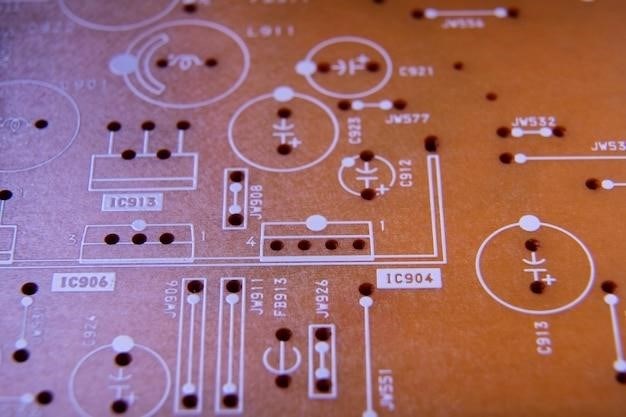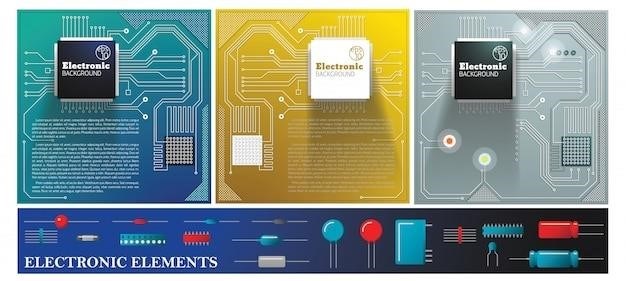
Introduction to the 1E7G Regenerative Radio Circuit
The 1E7G regenerative radio circuit is a fascinating and historically significant design that allows for the reception of radio signals with minimal components. This article will delve into the workings of this circuit, exploring its key components, construction process, and applications. We’ll also touch upon the legacy of regenerative radio and offer resources for further exploration.
What is a Regenerative Radio Circuit?
A regenerative radio circuit is a type of radio receiver that utilizes positive feedback to amplify the incoming signal. This feedback loop, created by a portion of the output signal being fed back into the input, enhances the sensitivity of the receiver, allowing it to pick up weaker signals. The 1E7G tube, a triode vacuum tube, is commonly used in regenerative circuits due to its ability to amplify and oscillate, further boosting the signal strength.
The principle behind regeneration is that the amplified signal is fed back into the input circuit, reinforcing the original signal. This creates a self-sustaining oscillation, leading to a significant increase in signal strength. While this can lead to instability if not carefully controlled, the regenerative effect allows for a more sensitive and selective receiver, capable of picking up faint radio waves.
The 1E7G Tube
The 1E7G tube is a key component of the 1E7G regenerative radio circuit. It is a triode vacuum tube, meaning it has three electrodes⁚ a cathode, a grid, and an anode (plate). The cathode emits electrons when heated, these electrons flow to the anode when a positive voltage is applied. The grid, positioned between the cathode and anode, controls the flow of electrons by modulating the electric field.
In the 1E7G regenerative radio circuit, the 1E7G tube acts as both an amplifier and an oscillator. The feedback loop, essential for regeneration, is achieved by connecting a portion of the output signal back to the grid. This feedback amplifies the signal, leading to a strong output. The 1E7G tube’s ability to oscillate allows it to generate a signal at a specific frequency, which is then tuned to match the incoming radio wave.
The 1E7G tube’s characteristics make it suitable for use in regenerative radio circuits. Its high gain, relatively low operating voltage, and compact size contribute to its popularity in these designs. Due to its ability to amplify and oscillate, the 1E7G tube plays a crucial role in enhancing the sensitivity of regenerative radio receivers.
Components of the 1E7G Regenerative Radio Circuit
The 1E7G regenerative radio circuit comprises several essential components that work together to receive and amplify radio signals. These components include the 1E7G vacuum tube, the tuning circuit, and the audio amplifier.
The 1E7G Vacuum Tube
The heart of the 1E7G regenerative radio circuit is the 1E7G vacuum tube, a triode type specifically designed for use in radio receivers. This tube acts as both a detector and an amplifier, responsible for converting the incoming radio waves into an audible signal. The 1E7G tube features a unique design with a relatively high gain, making it suitable for achieving strong amplification and sensitive detection of radio signals. It operates on low voltages and currents, making it ideal for battery-powered applications. The tube’s ability to oscillate when properly biased allows for the regenerative effect, increasing sensitivity and selectivity of the receiver.
The Tuning Circuit
The tuning circuit in the 1E7G regenerative radio circuit is responsible for selecting the desired radio frequency from the multitude of signals present in the air. This circuit typically consists of a variable capacitor and an inductor, forming a resonant circuit. By adjusting the capacitance of the variable capacitor, the resonant frequency of the circuit changes, allowing the receiver to tune in to different radio stations. The tuning circuit is connected to the antenna, which picks up the radio waves. When the resonant frequency of the tuning circuit matches the frequency of the incoming radio signal, the circuit resonates, allowing the signal to pass through to the 1E7G vacuum tube for amplification and detection.
The Audio Amplifier
The audio amplifier in the 1E7G regenerative radio circuit is responsible for taking the weak audio signal produced by the detector and boosting it to a level that can drive a speaker or headphones. In a simple 1E7G circuit, the audio amplifier may be a separate stage, often using another vacuum tube, or it could be integrated into the detector stage itself. The amplifier stage typically uses a transformer to couple the audio signal from the detector to the amplifier tube’s grid. The amplifier then amplifies the audio signal using the tube’s gain characteristics. The output of the amplifier is then fed to a speaker or headphones to produce the audible sound.
Building the 1E7G Regenerative Radio Circuit
Building a 1E7G regenerative radio circuit can be a rewarding project for electronics enthusiasts. This section will guide you through the process, providing step-by-step instructions and essential tips for successful construction.
Step-by-Step Instructions
Constructing a 1E7G regenerative radio circuit requires careful attention to detail and adherence to the schematic diagram. Start by assembling the tuning circuit, ensuring that the components are properly connected and secured. Next, install the 1E7G vacuum tube, paying close attention to the correct orientation of the pins. Proceed to connect the audio amplifier stage, including the speaker or headphones. Once the circuit is complete, double-check all connections for accuracy, ensuring that no wires are loose or mismatched.
Before powering up the circuit, ensure that the tuning capacitor is set to a safe position, avoiding any potential damage. Gradually increase the plate voltage, monitoring the performance of the circuit. Experiment with different antenna configurations to optimize signal reception. Fine-tune the tuning capacitor for the desired frequency. With careful assembly and proper testing, you can successfully build your own 1E7G regenerative radio circuit.
Troubleshooting Tips
If your 1E7G regenerative radio circuit is not performing as expected, there are a few common troubleshooting steps you can take. First, ensure that all connections are secure and properly made. Double-check the polarity of the batteries and the orientation of the 1E7G tube. If the circuit oscillates excessively, adjust the regeneration control until the oscillations are minimized. If there is no audio output, check the speaker or headphones for functionality and confirm that the audio amplifier stage is properly wired.
Examine the tuning circuit for any loose components or faulty connections. If the circuit is receiving a strong signal but the audio is distorted, try reducing the regeneration control or adjusting the tuning capacitor. If you are unable to receive any signals, ensure that the antenna is properly connected and that the circuit is operating at the correct frequency. Finally, if all other troubleshooting steps have been exhausted, consider checking the integrity of the 1E7G tube, as a faulty tube can significantly affect the circuit’s performance.

Applications of the 1E7G Regenerative Radio Circuit
The 1E7G regenerative radio circuit finds its niche in various applications, ranging from the reception of shortwave broadcasts to the exploration of experimental radio projects.
Shortwave Reception
Shortwave reception is a popular application for the 1E7G regenerative radio circuit. The circuit’s high sensitivity allows for the reception of weak shortwave signals, making it suitable for listening to international broadcasts, amateur radio transmissions, and even experimental radio projects. Shortwave signals travel long distances by bouncing off the ionosphere, a layer of charged particles in the Earth’s atmosphere. This makes shortwave reception particularly interesting for those interested in exploring radio communications beyond the local area. The 1E7G circuit’s ability to amplify weak signals is crucial for clear reception of these distant transmissions. The tuning circuit of the 1E7G receiver allows for precise selection of the desired frequency band within the shortwave spectrum, further enhancing the user’s ability to isolate and listen to specific broadcasts or transmissions.
Experimental Radio Projects
Beyond its traditional role in radio reception, the 1E7G regenerative radio circuit serves as a valuable tool for experimental radio projects. Its simplicity and adaptability make it an ideal platform for exploring various radio principles and techniques. Experimenters can modify the circuit’s components, such as the antenna, tuning capacitor, and audio amplifier, to investigate different aspects of radio wave propagation, modulation, and detection. The circuit’s ability to amplify weak signals allows for the exploration of unconventional antennas, such as long-wire antennas, for improved signal reception. The 1E7G circuit can also be used to experiment with different modulation schemes, such as amplitude modulation (AM) and frequency modulation (FM), by introducing modifications to the oscillator and audio amplifier sections. These experiments provide a hands-on understanding of radio principles and can lead to the development of unique and innovative radio communication systems.
The 1E7G regenerative radio circuit remains a testament to the ingenuity of early radio engineers and continues to be a valuable learning tool for enthusiasts and experimenters alike. Its simplicity, sensitivity, and adaptability make it a compelling choice for exploring the fascinating world of radio.
The Legacy of Regenerative Radio
Regenerative radio circuits played a pivotal role in the early development of radio technology. Their ability to amplify weak signals with minimal components made them crucial for the widespread adoption of radio communication. While modern radio receivers rely on more complex and sophisticated techniques, the principles of regenerative circuits continue to find applications in niche areas, such as low-power wireless communication and experimental radio projects. The 1E7G circuit, with its simplicity and ease of construction, serves as a tangible link to the pioneering days of radio, allowing enthusiasts to experience firsthand the ingenuity of early radio engineers.
Further Exploration
For those eager to delve deeper into the world of regenerative radio circuits, there are numerous resources available. Online forums dedicated to vintage radio and electronics offer a vibrant community of enthusiasts sharing knowledge, schematics, and construction tips. Libraries and online archives hold a wealth of historical documents and technical manuals on regenerative radio, providing valuable insights into the evolution of the technology. Additionally, various websites and blogs offer detailed guides and tutorials on building and experimenting with regenerative receivers, allowing individuals to explore the fascinating world of radio engineering with their own hands.